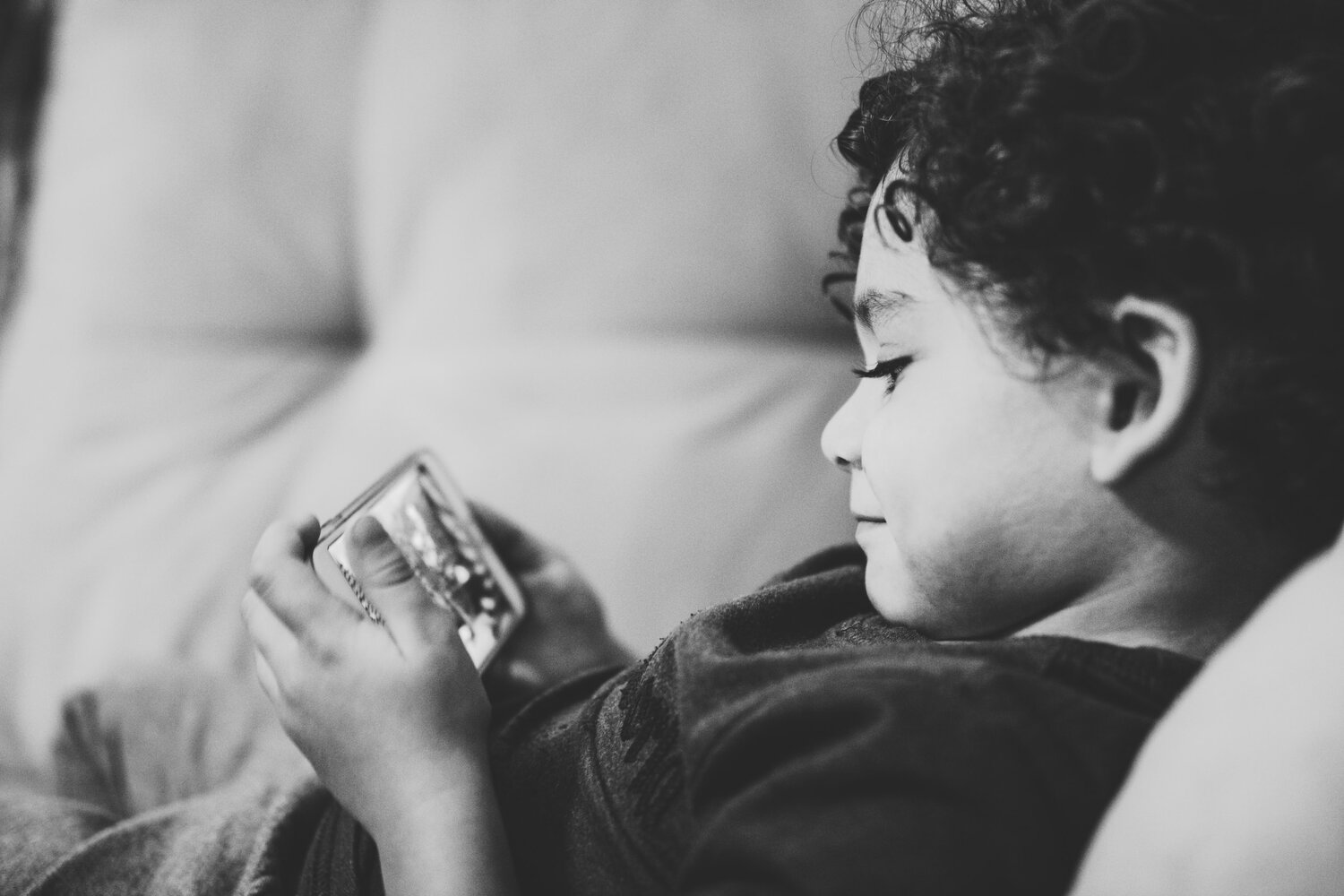
We limit how much technology our kids use at home.” — Steve Jobs
My feeling about technology in general is very Goldilocks and the Three Bears: Having too little exposure isn’t good, but too much – a few hours turns into six — is detrimental to their brain development and mental health.
The temptation for them to turn to the screen world is strong. It’s an easy escape whenever they’re bored, disinterested in who they’re with or what they’re supposed to be doing (like homework). At your fingertips, the ability to banter with your friends anywhere, and pin-drops to show where they are (and, sometimes, unfortunately, to see where you weren’t invited). And if your friends aren’t interesting enough, in the world of diminishing attention spans, there’s a universe of YouTube and TikTok videos.
Consider how hard it is for the developing brain to exercise restraint, when so many adults struggle with it, too. But it’s critical that we help them to help themselves, and establish good technology habits: spending the majority of their time in the real world.
It is important that kids are exposed to the internet, because a major part of our world and life today is designed around understanding technology. And yet if they are engaged to an extreme, in terms of growth and development, they may not develop adequate social skills and connections — and when they’re young adults, become anxious about in-person communication. When they’re constantly communicating in shorthand with abbreviated texts, they don’t really learn to write. And being able to work through conflicts in person is critical — in dialogue, following facial cues and responding with an appropriate energy level. Technology doesn’t force them to learn to work through situations. It teaches them that they can just shut off, walk away, and deal with it in a crafted sound bite later.
Children develop in the context of relationships, and they’re born with a brain ready to learn – which means absorbing information, relating, interacting, communicating, connecting. Their first language is one of emotion, which is vital in connection with developing social and cognitive skills. The brain in the first several years of life is very sensitive and malleable to experiences kids have. If one’s experiences become fixated in narrow areas — two-dimensional, fast-moving screen scenes — those areas get triggered and stimulate the neural pathways in the brain’s architecture. The skills not being used get pruned; it’s the “use it or lose it” phenomenon. Emotional and social skills promote the growth of language and critical thinking and reasoning skills. And in-person Interactions with others builds important skills, like cueing in on facial expressions and body language to read people, all the subtleties that are critical to developing positive social skills, and healthy relating and relationships.
Unfortunately, an outgrowth of this technology overuse is depression, anxiety, and loneliness, because they aren’t making real connections. And they can experience poor body image because they see the carefully crafted images on the screen and look at themselves in the mirror and say, I don’t look like that.
If the parent is setting limits and monitoring the screen time in a day, it should be done with reasons and explanations. For example, if you say, You can use your tablet an hour a day and can double on the weekend,you need to show them your reasoning: I want you to understand technology because it does play an important role in our world, but what’s more important is interacting with others and playing and exploring and discovering a whole host of things. We want the growth of the brain stimulated and developed to be more complex than narrowed down to one point of interest. But at the end of the day (actually, at the end of childhood), they are going to have to learn to self-regulate, which happens if they develop those healthy patterns with their parents while they’re young.
We know children learn by imitating the adults in their life. Make sure you’re modeling an appropriate use of technology, because modeling is very powerful for children: What a person does is even more important than what they say. Sending mixed messages leaves the child uncertain and insecure about what’s really being said and done. The goal is to help them toward growing into taking on the responsibility of setting limits and boundaries for themselves. Our job as parents and caregivers, after all, is to lead by example and lead them toward no longer needing us, right?
These Posts on Development
Housman Institute, LLC
831 Beacon Street, Suite 407
Newton, MA 02459
info@housmaninstitute.org
(508)379-3012
Explore
Our Products
Legal
Connect
Contact
Join our Mailing List!
Subscribe to receive our newsletter, latest blogs, and ECSEL resources.
We respect and value your privacy.
No Comments Yet
Let us know what you think